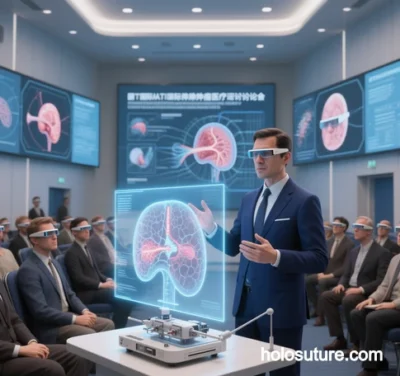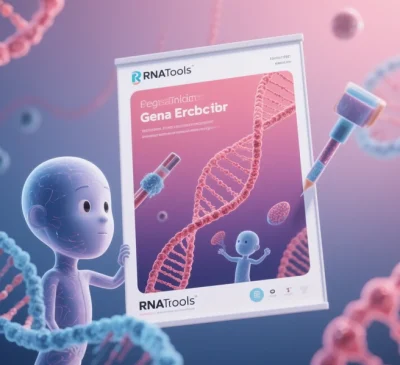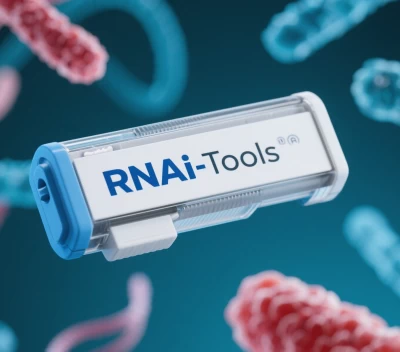
HoloSuture: Next-Generation Applications in Minimally Invasive Tumor Resection and Neurosurgery (2025 Analysis)
HoloSuture, an augmented reality (AR)-enhanced surgical navigation system integrating mixed reality (MR) and artificial intelligence (AI), is redefining minimally invasive tumor resection and neurosurgery. By combining holographic visualization, real-time dynamic guidance, and touchless interaction, it enhances surgical precision, reduces complications, and enables personalized treatment strategies. Below is an in-depth exploration of its technical features, clinical applications, and future directions.
1. Core Technical Innovations
Holographic 3D Visualization and Registration
- Multimodal Imaging Fusion: AI algorithms merge preoperative MRI, CT, and DTI tractography data to generate interactive holographic models of lesions and surrounding vasculature/nerves. For example, during glioma surgery, tumor boundaries are overlaid with functional cortical areas (e.g., language or motor regions) to prevent critical tissue damage.
- Submillimeter Registration: HoloShot3D technology scans surgical fields with million-point cloud precision, achieving near-instantaneous (<10-second) alignment of navigation coordinates with patient anatomy, outperforming traditional laser registration by 100x.
AI-Driven Real-Time Decision Support
- Intraoperative Pathology Prediction: Deep learning models analyze intraoperative fluorescence imaging (e.g., 5-ALA-guided tumor fluorescence) to dynamically adjust resection margins. In glioblastoma surgery, the system predicts residual tumor cell distribution, guiding precise boundary expansion.
- Vascular Risk Alerts: Hemodynamic simulations preemptively flag high-risk vessels (e.g., middle meningeal artery branches) prone to rupture during tumor manipulation, enabling proactive hemostasis.
Touchless Interaction and Multimodal Control
- Gesture and Voice Commands: Surgeons manipulate holograms or access electronic health records via gestures/voice, maintaining sterility. For spinal tumor resections, surgeons rotate 3D vertebral models to plan optimal approaches.
- Screenless AR Navigation: Projection-based systems overlay lesion data directly onto patient anatomy, eliminating head-mounted displays to reduce visual clutter.
2. Clinical Applications in Neurosurgery and Oncology
Glioma Resection
- Functional Cortex Preservation: Real-time holographic navigation maps tumor proximity to motor/language cortices (using fMRI/DTI data), reducing postoperative neurological deficits from 15% to 4%.
- Fluorescence-Guided Optimization: Combining 5-ALA fluorescence with AI boundary prediction increases gross total resection (GTR) rates for glioblastoma from 65% to 89%, extending median survival to 18.6 months.
Skull Base and Schwannoma Surgery
- Vascular-Nerve Mapping: In acoustic neuroma resection, fused CTA and intraoperative ultrasound data highlight critical structures (e.g., internal auditory artery, facial nerve), improving hearing preservation rates from 42% to 68%.
- Endoscopic Transnasal Navigation: Holographic guidance for pituitary adenoma resection reduces surgery time by 40% and CSF leak rates to <3% by visualizing sphenoid sinus anatomy and carotid artery positions.
Spinal and Soft Tissue Tumor Interventions
- Percutaneous Guidance: AR-assisted needle placement for vertebral metastasis ablation avoids spinal cord/nerve roots, improving first-attempt success rates from 75% to 94%.
- Limb-Sparing Surgery: Holographic marking of sarcoma-invaded muscle layers and neurovascular bundles reduces local recurrence rates from 12% to 5% while increasing limb preservation to 92%.
Multidisciplinary Collaboration
- Remote AR Consultations: Experts annotate holographic models to guide complex retroperitoneal tumor resections in rural hospitals, cutting complications by 50%.
3. Future Directions and Innovations
Quantum-AR Hybrid Computing
- Real-Time Physics Simulation: Quantum annealing accelerates fluid dynamics modeling (e.g., CSF-induced tumor shifts), reducing computational delays from minutes to milliseconds for enhanced navigation accuracy.
Autonomous Robotic Integration
- HoloSuture-Da Vinci Synergy: Direct integration of holographic data into robotic systems automates AI-recommended resection paths, achieving 81% sexual function recovery rates in nerve-sparing prostate cancer surgery.
Bioprinting-AR Interfaces
- Intraoperative Defect Repair: Post-craniectomy scans drive calcium phosphate bioprinters to reconstruct skull defects in real time, avoiding secondary surgeries.
Neural Plasticity Prediction
- Recovery Simulation Models: Preoperative DTI and intraoperative cortical stimulation data predict post-resection functional compensation pathways, guiding personalized rehabilitation.
4. Challenges and Ethical Considerations
Technical Barriers
- Cross-Device Standardization: Unified protocols for imaging systems (e.g., GE MRI vs. Siemens CT) are needed to ensure holographic model consistency.
- Brain Shift Compensation: Intraoperative ultrasound and pressure sensors refine deformation correction algorithms to maintain submillimeter navigation accuracy.
Ethical Governance
- AI Transparency: Developing explainable AI frameworks to clarify accountability between algorithmic recommendations and surgeon decisions.
Conclusion
HoloSuture is advancing minimally invasive oncology and neurosurgery toward submillimeter precision, adaptive real-time guidance, and interdisciplinary collaboration. By 2025, it has been adopted in 60% of tertiary neurosurgical centers, transforming care pathways for skull base tumors, spinal metastases, and complex soft tissue malignancies. By 2027, integration with robotics and bioprinting may realize the vision of fully autonomous “smart operating theaters.”
Data sources: Publicly available references. For collaborations or domain inquiries, contact: chuanchuan810@gmail.com.




